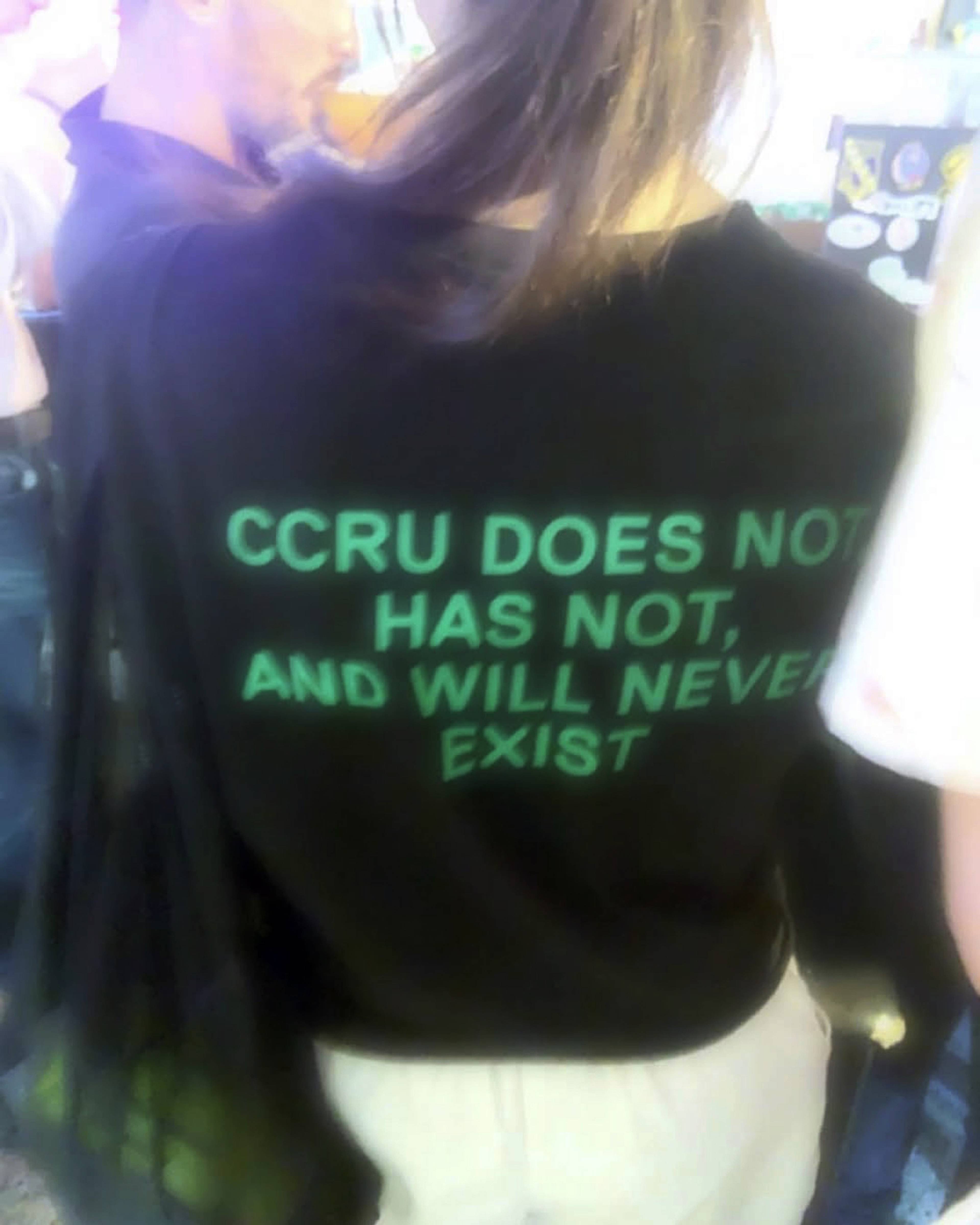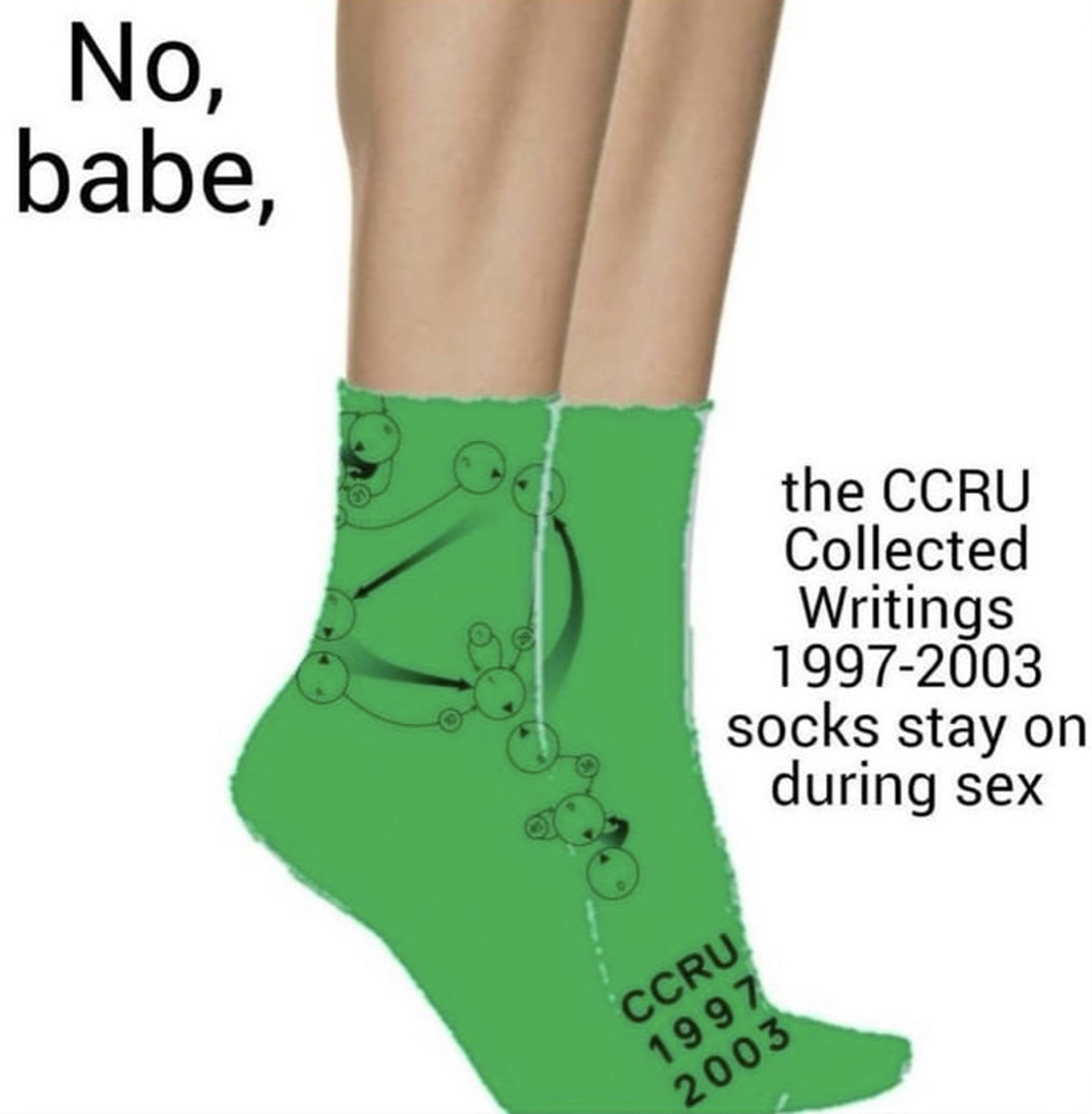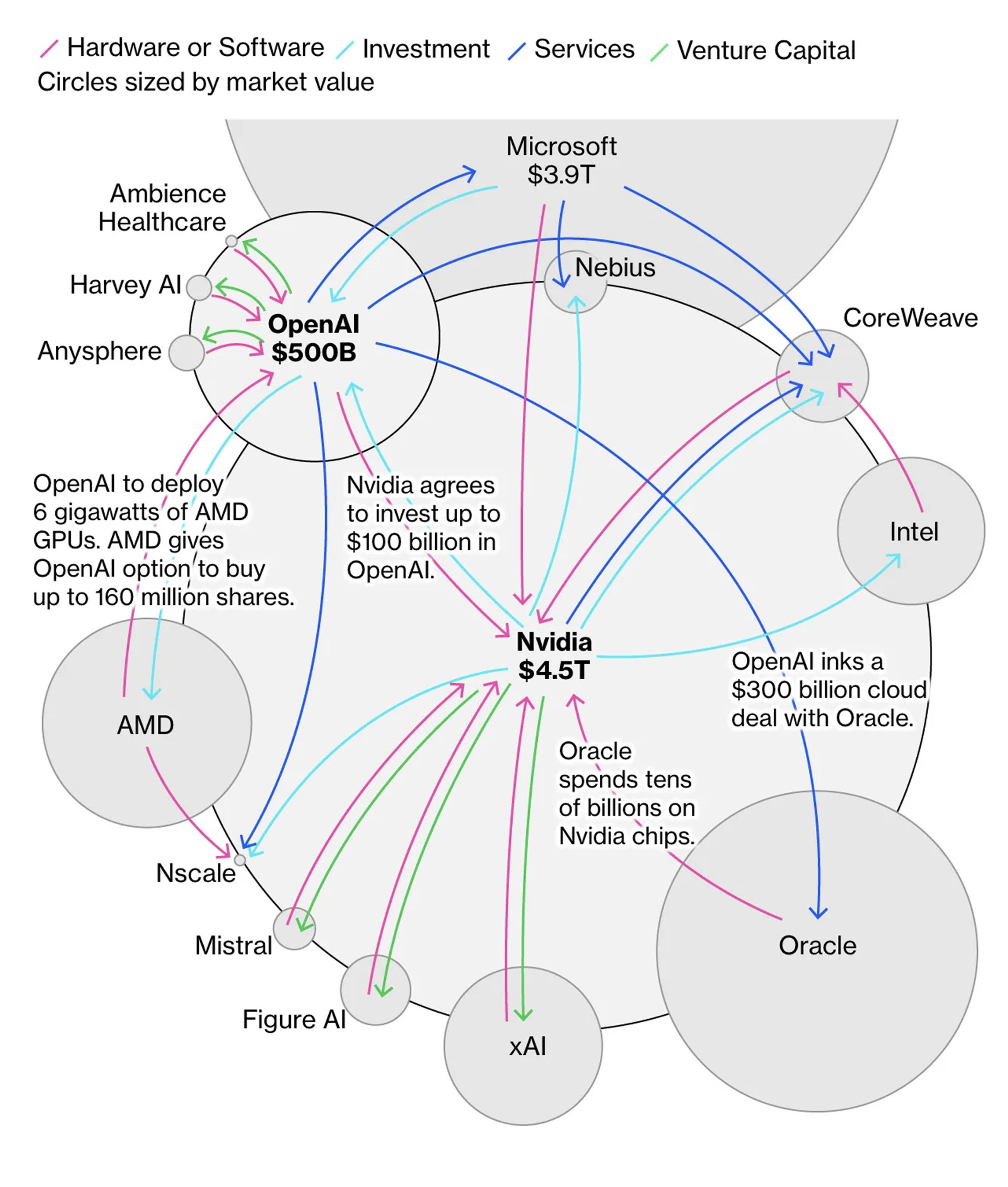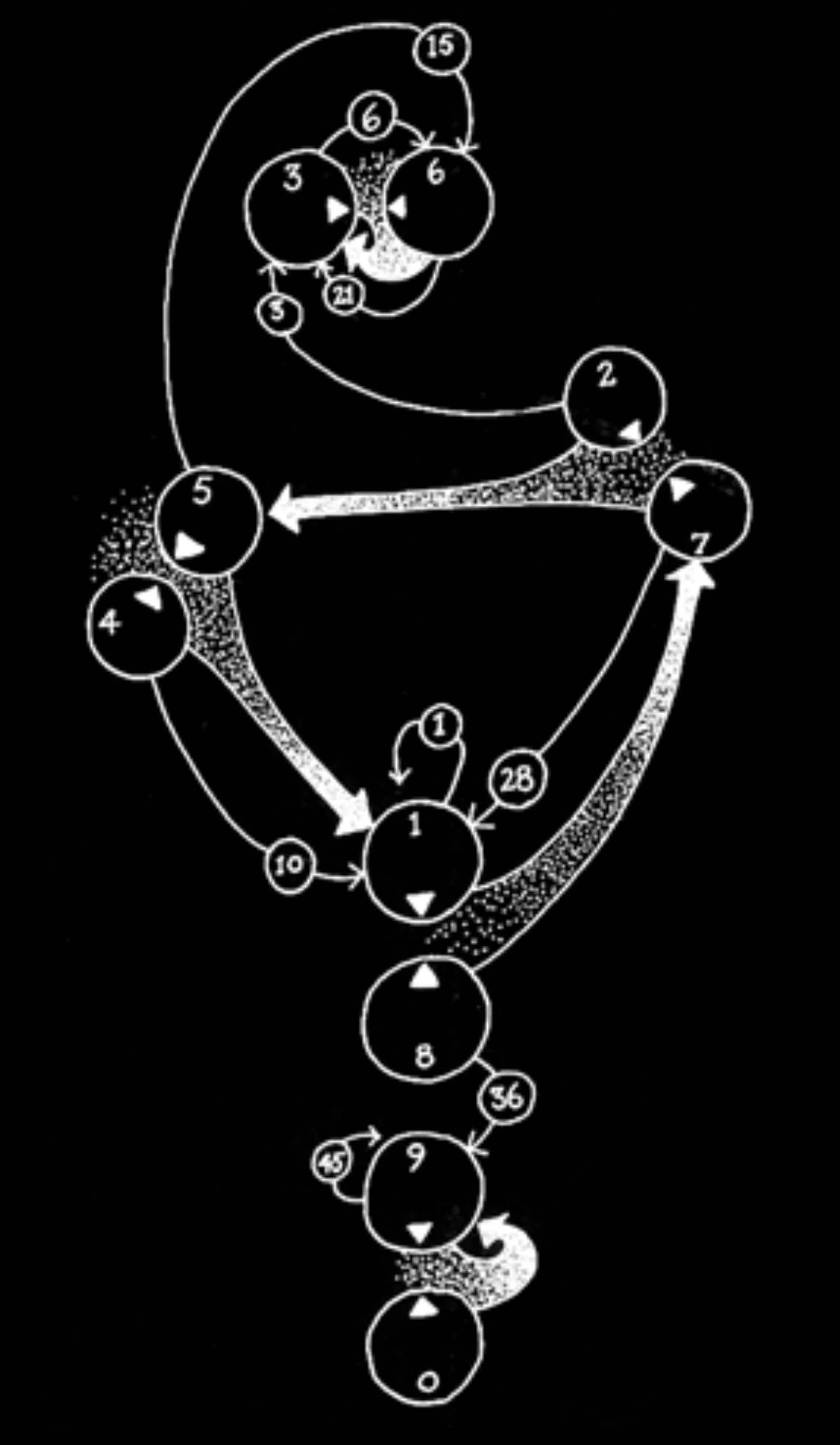Recently, at a Bay Area house party, I met a man who described his vocation as “AI safety research.” I asked him what he thought the probability was that an artificial superinitelligence would arise in our lifetime to dominate and/or kill us all. He thought for a moment, then told me: thirty percent. As a naif who has spent the bulk of my life outside the AI-development capital of the United States, that number struck me as comical. But around these parts, if you aren’t concerned about the imminent arrival of artificial general intelligence (AGI), you aren’t paying attention.
I got home that night and locked in for my nightly Twitter scroll sesh (“for research,” always “for research”). Splashed across my feed was an image I was sure was AI-generated. Tucker Carlson was holding up a photo of a neon-green diagram, known to me from my Goldsmiths student/raver days, shittily printed on a piece of A4 office paper. In fact, it was a screenshot from a real episode of the conservative commentator’s show – a conversation with Conrad Flynn, a Christian conspiracy-theorist sort of figure who was on to explain the culture-making influence of an “occult group” called the CCRU. According to Flynn, the imminent AI apocalypse is of their doing.
Screenshot from “The Tucker Carlson Show,” 2025
For the uninitiated: That diagram, known as the Numogram, was the calling card of the Cybernetic Culture Research Unit, a philosophy collective that began at Warwick University, UK in the 1990s. The CCRU dwelt in deconstruction, jungle music, esotericism, and, eventually, a lot of amphetamines. In its milieu were Mark Fisher and Kodwo Eshun, Steve Goodman (aka Kode9) and Sadie Plant. Its founder was Plant’s then-boyfriend, the Warwick philosophy professor Nick Land.
One of the CCRU’s most enduring outputs is the idea of accelerationism, which held that techno-capitalism functions like a positive feedback loop – a dynamic that will bring the world to either rapture or rupture. “Accelerationisms” of various political valences proliferated in the group’s wake, welcoming an evolutionary transition into the great, artificial unknown (did somebody say Fully Automated Luxury Communism?). Proponents saw this process as not just desirable and inevitable, but as already-having-happened: that is, a sealed future is retroactively inscribing itself into the past, which, from the standpoint of that future, is our present. Such is the spiraling temporality of the Numogram, that “decimal labyrinth” foretelling machinic futures writing themselves into existence.
Why is fashy accelerationist theory unc having such a moment? One reference is an anomaly, but several is (not to sound conspiratorial here) a pattern.
The CCRU eventually severed their activities from the university, retreating to an apartment in the occultist Aleister Crowley’s hometown of Leamington Spa. The cyber-utopian sentiment of the 1990s dissipated as Y2K came and went, the dot-com bubble burst, and the rise of digital networks failed to overturn extant systems of power. Eventually, Land, whose politics were always provocative and anti-liberal, took a hard right turn. He expatriated to Shanghai and resurfaced in the 2010s in the neoreactionary blogosphere to advance a decidedly pro-market and anti-human accelerationist program. According to official Warwick records, the CCRU does not, has not, and will never exist. If you had previously asked me the odds that Tucker Carlson would be discussing the CCRU in 2025, I would have put them way below thirty percent.
Meme source unknown
Yet here we are, with Nick Land suddenly everywhere. In seemingly unplanned parallel, longreads on Land were recently published in Compact; circulated on academic e-girl Twitter; and even graced the pink-hued pages of the Financial Times. The nominally Jewish magazine Tablet called him “the most important name in Silicon Valley you’ve never heard of” (making no mention of his rampant antisemitism). A book of Land’s collected blog posts was recently put out by the alt-right Passage Press. The Dutch edgelords over at Keeping It Real Art Critics did a podcast on Land while I was drafting this column. Why is fashy accelerationist theory unc having such a moment? One reference is an anomaly, but several is (not to sound conspiratorial here) a pattern.
The most obvious explanation is probably this: In the afterlives of the CCRU, Land has had a strong cult following on the so-called “intellectual dark web,” wordily expounding his Dark Enlightenment philosophy to a cohort of blog-reading nerds that turned out to include current US Vice President JD Vance. Hence, the Financial Times identifies Land as an intellectual influence on the Trump administration (in a similar vein to claims about fellow blogger Curtis Yarvin). Vance’s ascent to power – and the manifest absurdity of identifying any thinker as an “intellectual” influence on present US leadership – might account for the resurgence of interest in Land’s work from the Right (unironically embracing) and the Left (alarmed) alike.
But I think a more interesting explanation is that his pet theory has proven right. Land has spent his post-CCRU career elaborating a particularly right-wing flavor of accelerationism, denouncing democratic governance (and humanism altogether) in favor of not just technocratic rule, but rule by technology itself as a force unabated. One need not take literally Land’s assertion that AI is an evil agent from the future to grant that his ideas bear on the present. The scenario that Land predicted has, in some sense, already arrived – although less in the sci-fi eschatological way he imagined than in step with the “boring dystopia” theorized by his former CCRU counterpart Mark Fisher.
Subjugation by runaway forces of techno-capital is already occurring all around us – not as some Big Bang of singularity, but as the creeping erosion of human intellect; the absolute lack of labor protection; the recession of our shared lifeworld. And in typical feedback-loop fashion, much is vested in this trend’s continuation. “America is now one big bet on AI,” proclaimed an FT headline last month. The AI industry is currently underpinned by a massive, speculative circle-jerk where companies are cross-investing hundreds of billions of dollars – Nvidia investing in OpenAI models which will run on chips made by Nvidia – even while their roadmaps to profitability remain remarkably unclear. In the meantime, they are pivoting to the tried-and-true business model of selling attention to advertisers whilst harvesting training data via slop feeds like Sora. As the dollar weakens, the whole US economy is, increasingly, a house of cards held up by the value getting pumped into a handful of nerds’ efforts to engineer into existence an entity with a twenty to thirty percent chance (apparently) of destroying the world.
How Nvidia and OpenAI Fuel the AI Money Machine. Courtesy: Bloomberg News
The Numogram. Courtesy: r/chaosmagick
We are living in the Landian wet dream, with capital-qua-AI running unchecked in the direction of meltdown. “Logistically accelerating techno-economic interactivity crumbles social order in auto-sophisticating machine runaway,” Land writes. This is less theory-fiction than an accurate description of the present. Firms “too big to fail” are using the fantasy of technological inevitability as cover for a class war, restructuring entire industries to manufacture demand for digital solutions still in search of problems. We have AI dystopia already; it’s just unsexy and, frankly, pretty sad, architected by deficiencies in boring realms like policy and regulation. In that light, I see the surge of interest in the right-wing nihilist philosopher as a kind of veil for the much more banal varieties of exploitation and immiseration already taking place all around us. Land was onto something in his assessment that capital is a vast, anti-human, and relatively intractable force beyond any individual’s control. But I’ll stop short of co-signing his belief that this outcome is already settled. Rather, it is a trajectory that has been constructed – and not by some occult conspiracy of lemurs from the future.






